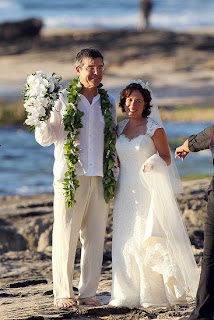 "A lot of hot hype has come out of the 2011 Comic-Con, but as the dust settles in San Diego, perhaps the most exciting movie (at least for us at SheWired) promoted was Snow White and the Huntsman.
"A lot of hot hype has come out of the 2011 Comic-Con, but as the dust settles in San Diego, perhaps the most exciting movie (at least for us at SheWired) promoted was Snow White and the Huntsman. Starring Twilight’s Kristen Stewart as a warrior Snow White and Oscar-winning film goddess Charlize Theron as a very wicked (and stunning!) Queen, the first official photos of the cast in costume were released by Universal in conjunction with their Comic-Con panel.
Starring Twilight’s Kristen Stewart as a warrior Snow White and Oscar-winning film goddess Charlize Theron as a very wicked (and stunning!) Queen, the first official photos of the cast in costume were released by Universal in conjunction with their Comic-Con panel.  The stars promised this version is far from a fairy tale dream.
The stars promised this version is far from a fairy tale dream. “I wasn’t initially jumping at the chance [to play Snow White] but she is one of the most heavy-handed, sincere [characters], seriously doesn’t let her heart cloud her mind,” Stewart told fans when asked why she was drawn to the role. “Also, I get to have a sword and stuff.”
“I wasn’t initially jumping at the chance [to play Snow White] but she is one of the most heavy-handed, sincere [characters], seriously doesn’t let her heart cloud her mind,” Stewart told fans when asked why she was drawn to the role. “Also, I get to have a sword and stuff.” "Trust me, she's dark,” she promised of her Evil Queen.
"Trust me, she's dark,” she promised of her Evil Queen. “I'm preparing to play a serial killer. Watch out, Kristen." "And I'm ready for it, bitch!" Stewart shot back. "Let's go!" Source: www.shewired.com
“I'm preparing to play a serial killer. Watch out, Kristen." "And I'm ready for it, bitch!" Stewart shot back. "Let's go!" Source: www.shewired.comPattinson -- who plays chivalrous vampire Edward Cullen -- describes being taken by surprise on the set of the first Twilight film in 2008, when a fan handed her 3-month-old baby over to a mystified Rob.
 Pattinson, at first, thought she wanted him to autograph her baby. But in fact, her request was even weirder.
Pattinson, at first, thought she wanted him to autograph her baby. But in fact, her request was even weirder."I didn't really understand the reality of the situation at this point, that anybody would actually see this picture", Rob admits. "So there's a picture somewhere on the Internet of me biting this baby". "You bit the baby?" exclaims Kristen. "That's so weird".

 Robert Pattinson and Kristen Stewart attending Comic Con at San Diego, on 21st July 2011
Robert Pattinson and Kristen Stewart attending Comic Con at San Diego, on 21st July 2011 After trying to sheepishly justify his action ("I didn't actually touch it!"), Pattinson cracks a joke to further provoke Stewart. "It's kind of a funny picture. The baby is so young, its entire head fits in my mouth", Pattinson deadpans, getting a laugh from his costar/girlfriend.
 Robert Pattinson & Kristen Stewart in a promotional still of Twilight saga "Breaking Dawn"
Robert Pattinson & Kristen Stewart in a promotional still of Twilight saga "Breaking Dawn"
 Robert Pattinson on the set of "Cosmopolis", June 2011
Robert Pattinson on the set of "Cosmopolis", June 2011As for Pattinson, he'll be appearing next in the period piece Bel Ami, as an amoral cad who climbs the social ladder by seducing powerful men's wives. And he's sporting that weird half-shaved hairdo for the recently wrapped David Cronenberg thriller Cosmopolis, just in case he needs to do some re-shoots.
Source: www.ivillage.com






















































